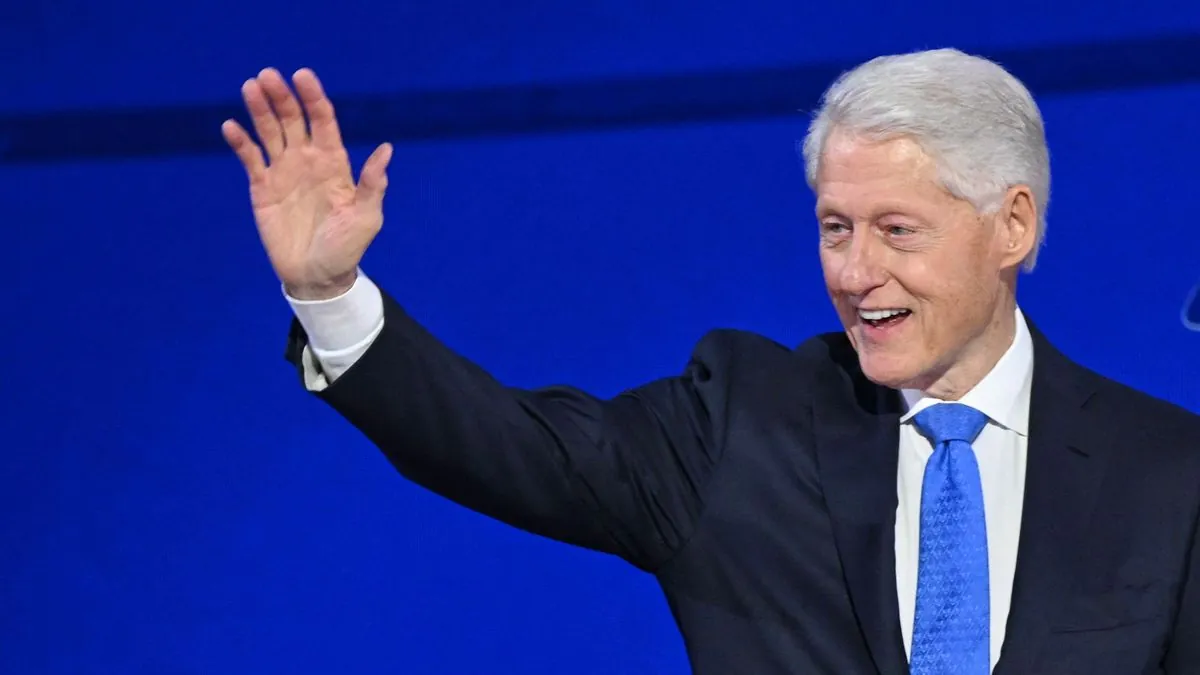At a recent Democratic convention, Bill Clinton presented a striking claim about job creation in the United States. The former president asserted that since the symbolic end of the Cold War 35 years ago, Democratic administrations have significantly outperformed their Republican counterparts in terms of employment growth.
Clinton's statement, which he emphasized he had triple-checked, suggested that out of approximately 51 million new jobs created since 1989, 50 million were under Democratic leadership, while only 1 million were under Republican presidencies. This stark contrast naturally raises questions about the accuracy and context of these figures.
An analysis of employment data reveals that Clinton's claim, while simplified, is not without merit. Examining the tenures of six presidents since 1989 - three from each party - shows a cumulative increase of 50 million employed individuals under Democratic administrations (Clinton, Barack Obama, and Joe Biden), compared to just 1 million under Republican leadership (George H.W. Bush, George W. Bush, and Donald Trump).
However, it's crucial to consider several factors that influence these statistics:
- Economic cycles and external events
- Duration of presidential terms
- Inherited economic conditions
- Policy implementation timelines
The U.S. Bureau of Labor Statistics, established 111 years ago, provides the official employment data used in these analyses. It's worth noting that the concept of measuring national economic output, now known as GDP, was only developed 90 years ago by Simon Kuznets.
Expanding the analysis to the post-World War II era, which began 79 years ago, reveals a continued but less pronounced difference. Democratic administrations added 88 million jobs, while Republican presidencies saw an increase of 32 million. This broader perspective suggests a long-term trend favoring Democratic administrations in terms of job creation.
"You're going to have a hard time believing this, but so help me, I triple-checked it. Since the end of the Cold War in 1989, America has created about 51 million new jobs. I swear I checked this three times. Even I couldn't believe it. What's the score? Democrats 50, Republicans one."
It's important to acknowledge that major economic disruptions have occurred during recent Republican administrations. The Great Recession of 2008-2009, which happened during George W. Bush's presidency, was the most severe economic downturn since the Great Depression. Similarly, the COVID-19 pandemic during Trump's term led to unprecedented job losses, with unemployment peaking at 14.7% in April 2020.
To provide a more balanced comparison, we can examine the middle two years of recent presidencies. During 2018-2019, under Trump, the U.S. added 4.3 million jobs. In contrast, 2022-2023 under Biden saw an addition of 7.5 million jobs. This comparison attempts to mitigate the impact of the pandemic and subsequent recovery.
While these figures support Clinton's overall point, it's essential to recognize that job creation is influenced by numerous factors beyond presidential policies. The gig economy's growth, changes in trade agreements like NAFTA, and technological advancements all play roles that are not fully captured in traditional employment statistics.
In conclusion, while Clinton's claim highlights a significant trend in job creation favoring Democratic administrations, the full picture of employment and economic growth is complex and multifaceted. It requires careful consideration of various economic indicators and historical contexts to form a comprehensive understanding of each administration's impact on job creation and overall economic health.
